
Mao Zedong: biography
The great state leader and the Communist Party of China (CPC) founder, Mao Zedong is considered one of the 20th-century communist theorists, particularly, Maoism.
The future politician was born at the end of 1983 in the southern province Hunan. Mao’s father Máo Yíchāng was a small trader who sold rice in the city. The mother Wén Qīmèi was a Buddhist. Initially, the boy embraced her belief but later, as he got acquainted with outstanding politicians’ books, he became an atheist. When he was a kid, he went to school where he studied the basics of Chinese and Confucianism.
At 13, the boy quitted his studies and returned to his father’s house. However, he did not stay there long. Three years later, he had a quarrel with his parents regarding his unwanted marriage and left the house.
In 1911, the revolutionary movement changed the young man’s life. He spent six months in the army as a signalman.
As soon as the peace was established, Mao Zedong continued to study: at first, it was a private school; later, he entered a teacher training college. At this period, he was studying the works of famous European philosophers and great politicians. The new knowledge made a significant impact on the young man’s views. He created the Renovation of the People Study Society based on Confucianism and Kantianism.

In 1918, the talented young man received his teacher’s invitation and moved to Beijing to work in the capital library and continue his education. In that city, he met the co-founder of the Communist Party of China Li Dazhao and started following the Communist and Marxist ideas. Apart from the classical works on the mass ideology, the young man studied Peter Kropotkin’s radical books explaining the meaning of anarchism.
At this period, Mao turned over a new leaf in his personal life: he met Yang Kaihui who later became his first wife.
Revolutionary fight
In the next few years, Mao was traveling across the country. He saw the class injustice everywhere. By the end of 1920, he became a convinced communist. Mao made a conclusion that the Russian-October-revolution-like changes were necessary to change the situation in the country.
As the Bolshevik party won in Russia, Mao started supporting the ideas of Leninism. He created resistance cells in many regions of the country and became the leader of CPC. At that period, the communists got close to the Kuomintang promoting nationalism. However, several years later, the CPC and the Kuomintang were bitter enemies.
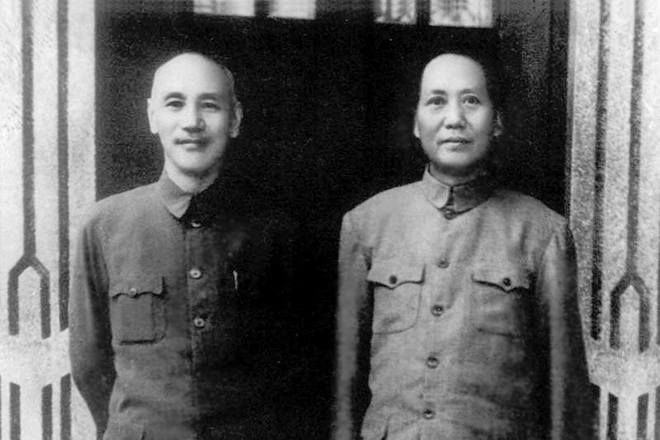
In 927, not far from Changsha, Mao organized the first revolution and created the Communist Republic. Peasants were Zedong’s main support. The politician introduced the property reform which liquidated private property and also gave women the right to vote and work. Mao Zedong was a respected figure among communists. Using his position, he introduced the first repression wave in three years.
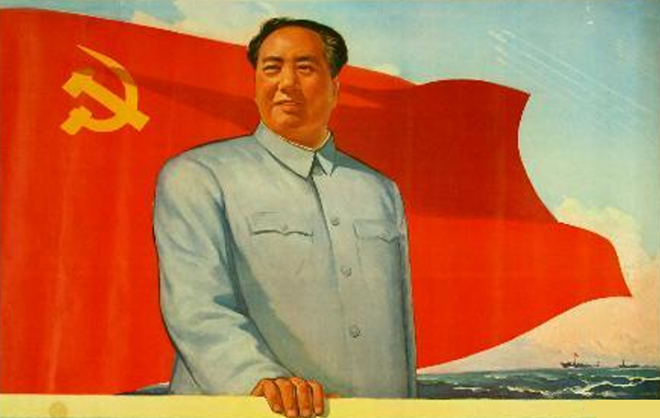
Zedong’s supporters who dared criticize the party’s and the Soviet leader Joseph Stalin’s actions were repressed. The case of the secret spy organization was fabricated, and many figurants were executed. Thus, Mao Zedong became the head of the first Chinese Soviet Republic. Establishing this order all over the country was the dictator’s new goal.
Transition
The civil war captured the country and lasted for more than ten years to end with the communists’ victory. While the communists relied on the vast group of peasants, the nationalism proponents were led by the Kuomintang and Chiang Kai-shek.
Several conflicts took place between the enemies. In 1934, Mao Zedong lost and had to leave the region with his 100-thousand communist army.
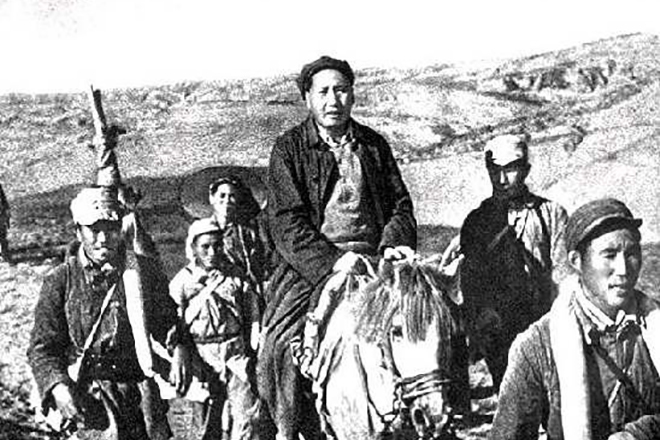
The long 10-thousand-kilometers travel expected them. During the transition through the mountains, more than 90% of people died. Zedong stopped in Shanxi and founded the new CPC branch with those remained alive.
CPR establishing
During the Japanese military campaign against China, the CPC and the Kuomintang had to combine their effort to defeat the external enemy. As the danger passed, they continued to fight against each other. In a while, the communist army grew stronger, defeated Chiang Kai-shek’s soldiers, and pushed them to Taiwan.
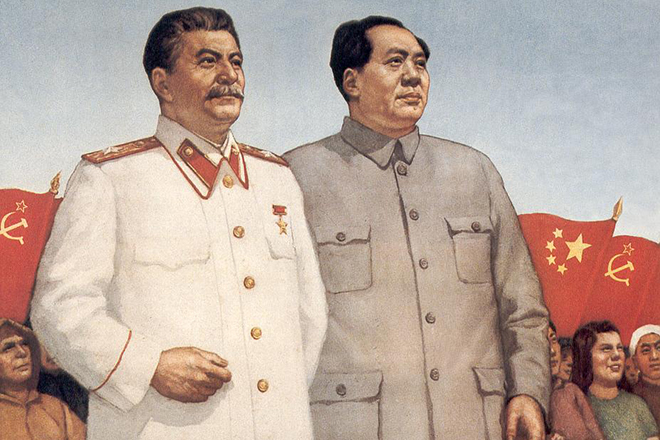
It happened in the late 1940s. In 1949, the People's Republic of China was founded; Mao Zedong became its leader. At this period, two communist leaders, Mao Zedong and Joseph Stalin, got close. The USSR supported its Chinese comrades and sent its best engineers, builders, and military assets there.
Mao’s reforms
Mao Zedong began his governance with the Maoism theoretical renewal. The leader described the model of the Chinese communism where peasants were its fundament, and the great Chinese nationalism had the primary role.
In the first years, “Three years of labor and ten thousand years of wealth” and “To catch up and overtake England in 15 years!” were the most popular slogans. That epoch is known as the Hundred Flowers Campaign.
Mao was a convinced proponent of total nationalization of all private property. He encouraged to organize communes where everything from clothes to food would be communal. The state promoted the fast industrialization; home blast furnaces were created to melt alloys. However, this proved to be a failure: agriculture began to deteriorate which led to starvation. The low-quality metal produced in homes caused many serious malfunctions leading to people’s deaths. These facts were kept secret from the leader of the country.
Cold war
The highest spheres of the government started splitting; the situation was aggravated by Joseph Stalin’s death and colder relations with the Soviet Union. Mao Zedong criticized Nikita Khrushchev’s government and accused the new Soviet leader of chauvinism and wavering from the communist course. In his turn, Khrushchev withdrew all personnel from China and stopped supporting the CPC.
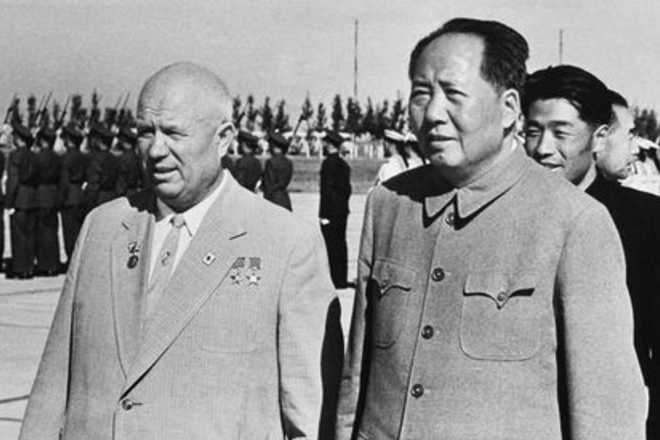
At this period, the PRC was involved in the conflict in Korea to back the Communist Party of Korea and its leader Kim Il-sung. As a result, the USA became the PRC’s enemy.
The Great Leap Forward
As the Hundred Flowers Campaign finished with the agriculture deterioration and 20 million people starving to death, Mao began the repression among those unsatisfied with the regime. In the 1950s, the wave of terrorism occurred. The second stage of the country’s reorganization called “The Great Leap Forward” began. It was aimed at increasing the harvest by all means.
People were encouraged to get rid of rodents, insects, and small birds that negatively influenced the crop. However, the mass elimination of sparrows had the opposite effect: the next harvest was destroyed entirely by caterpillars. Consequently, the food losses were even more serious than before.
The nuclear super-Power
In 1959, Liu Shaoqi replaced Mao Zedong and became the new country’s leader because the population was angry. However, Zedong remained the leader of the CPC. The nation came back to private property and turning back Mao’s innovations. Zedong was patient and did not interfere with these processes. He was still popular among ordinary people.
During the cold war, the tension between China and the USSR increased in spite of the common enemy, the USA. In 1964, the CPR declared it had created the nuclear bomb. Chinese troops at the border bothered the Soviet Union.
Even after the USSR gave the CPR Port Arthur and several other territories, Mao started the Sino-Soviet border conflict on the Damansky Island. The tension was growing and resulted in the military actions in the Far East and the border with the Semipalatinsk region.
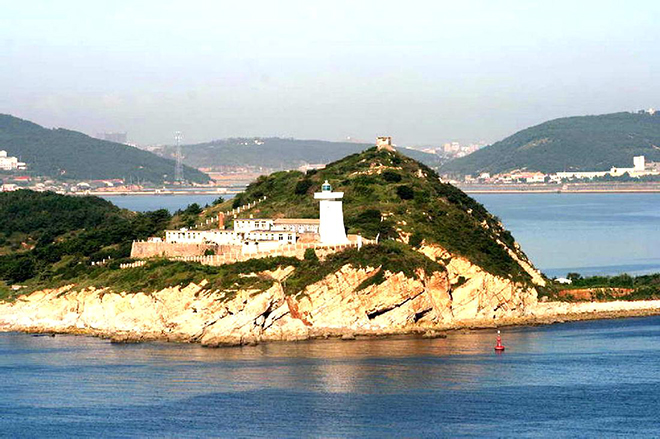
The conflict finished with several hundred victims on both sides. However, this encouraged the USSR to put its strengthened military troops on the border. Besides, the Soviet Union supported Vietnam which won the war against the USSR and opposed China from the south.
Cultural revolution
Gradually, the liberal reforms stabilized the country’s economy, but Mao did not agree with his opponents. The population still respected him. In the late 1960s, he started the new stage of the communist propaganda called “the cultural revolution.”

Mao’s troops were still powerful. Zedong came back to Beijing and counted on introducing the youth the new movement theses. Mao’s third wife Jiang Qing also fought against the society’s bourgeoise inclinations; she organized the Red Guard troops’ actions.
Throughout the cultural revolution, several million people from ordinary peasants and workers to the party and cultural elite were liquidated. Young rebels destroyed everything; city life was at a standstill. Paintings, furniture, and other items were burned.
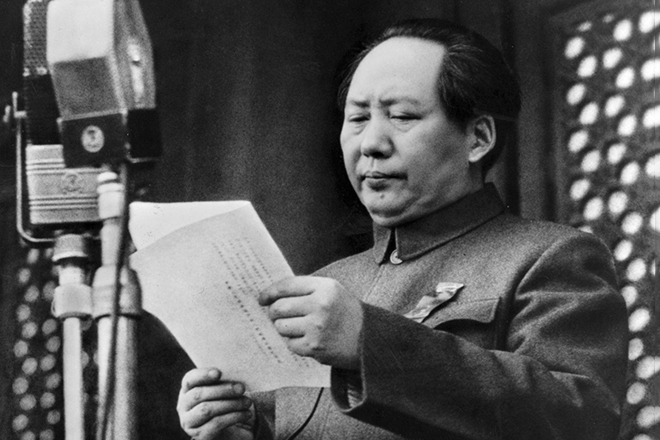
Soon, Mao understood how dire the consequences of his actions were; he made his wife responsible which prevented his personality cult debunking. Mao Zedong rehabilitated his former party comrade Deng Xiaoping and made him his right hand. Later, after the dictator’s death, this politician made a significant difference in the country’s development.
In the early 1970s, Zedong confronted the USSR and started getting close to the USA. In 1972, the first meeting with the American President Nixon took place.
Personal life
The Chinese leader’s life was full of love affairs and legal marriages. Mao Zedong promoted free love and rejected the traditional family as the value. At the same time, he married four times and had many children many of which died in infancy.

Mao’s second cousin Luo Yixiu became young Zedong’s first wife; she was 18 which made her four years older than her husband. Zedong opposed his parents’ choice and escaped from the house at the wedding night; this action covered the young woman with shame.
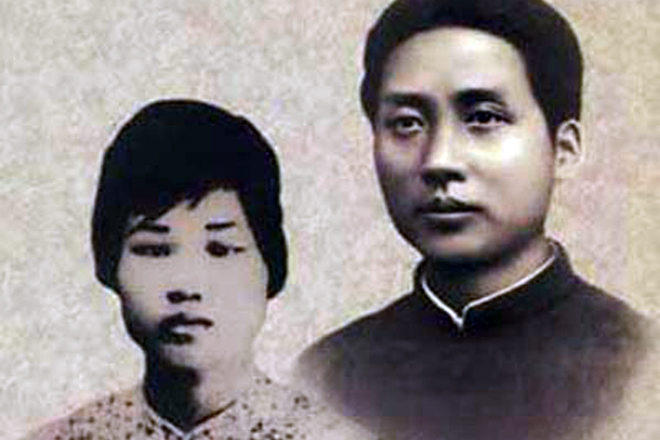
Ten years later, Mao met his second wife when he studied in Beijing. The daughter of his teacher Yang Changji Yang Kaihui became his beloved one. The young woman felt the same way. Soon after she joined the CPC, the couple married. Mao’s comrades considered this marriage to be the ideal revolutionary union: the young people married against their parents’ will which was unacceptable at that time.
Yang Kaihui gave birth to three sons: Anying, Anqing, and Anlong. Besides, she was Mao’s assistant in all his actions. In 1930, during the military conflict with the Kuomintang, she was courageous and loyal to her husband. Captured with her children, she did not reject her husband after being tortured. She was executed in front of her sons.

Perhaps, this woman’s suffering and death were wasted because Mao had been living in a civil marriage with his new passion He Zizhen for a year. She was 17 years younger than Zedong and served in the communist army as a small intelligence agency administrator. The brave woman grabbed the impulsive man’s attention; soon after his wife’s death, he declared her his new spouse.
Their life together was not simple; in several years, He gave birth to five children. The couple had to give two of their children to other people during the fierce struggle for power. Life ordeals and the husband’s unfaithfulness destroyed the woman’s health. In 1937, the CPC leader sent her to the USSR for a treatment. She spent several years in a mental hospital. In the end, the woman settled in the Soviet Union; her career was quite good. Later, she moved to Shanghai.
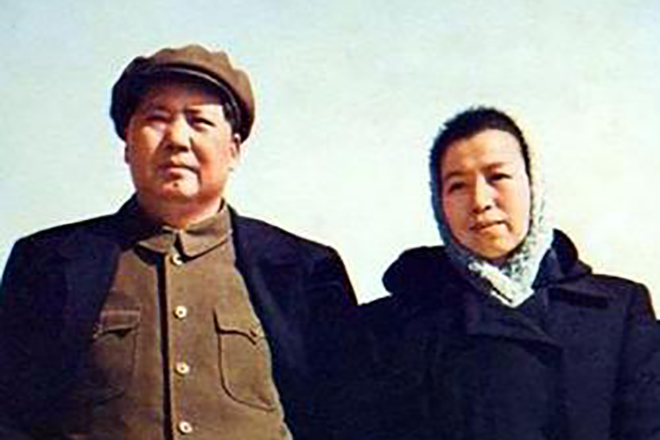
The Shanghainese actress with a shaky reputation Lan Ping became Mao’s last spouse. By the age of 24, she had been married several times and had many love affairs with directors and actors. The young beauty conquered Mao’s heart when she performed at the Chinese opera where she had one of the major roles. In return, the country’s leader invited her to one of his performances where she proved to be a diligent student of Chairman Mao. Soon, they started living together. The actress had to change her stage name: the femme fatal turned into a modest housewife Jiang Qing.
In 1940, the young wife gave birth to the daughter. Jiang Qing genuinely loved her husband, accepted his two children from the previous marriage, and never complained of harsh living conditions.
Death
The 1970s were tarnished by Chairman Mao’s disease. His heart was failing; eventually, two heart attacks undermined his health and caused his death.
The party’s leader weakness prevented him from controlling the events in the country. Two Chinese politician groups were fighting for the power. The Gang of Four where Mao’s wife belonged controlled the radicals. The opposite group was led by Deng Xiaoping.
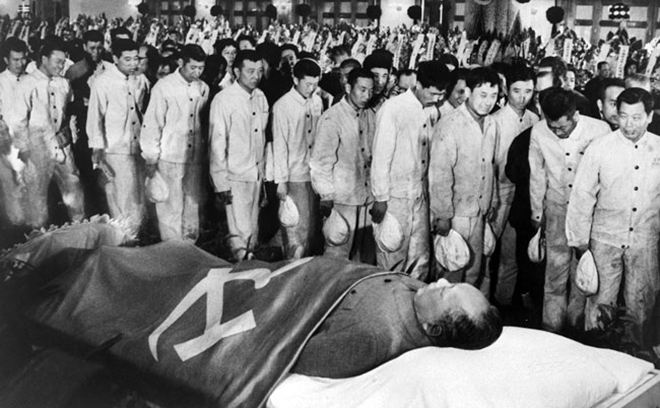
In the early fall 1976, after Mao Zedong’s death, the political movement against Mao’s wife and her supporters grew. They were condemned to death, but the exception was made for Jiang Qing: she was put to a hospital where she committed suicide several years later.
Although Mao’s wife’s image was connected with terrorism, Mao Zedong remains a popular figure in people’s memory. More than a million Chinese people visited his funeral, and his body was embalmed. In a year after Mao Zedong’s death, his mausoleum was open. For more than 20 years, some 200 million CPR citizens and tourists have visited the mausoleum.
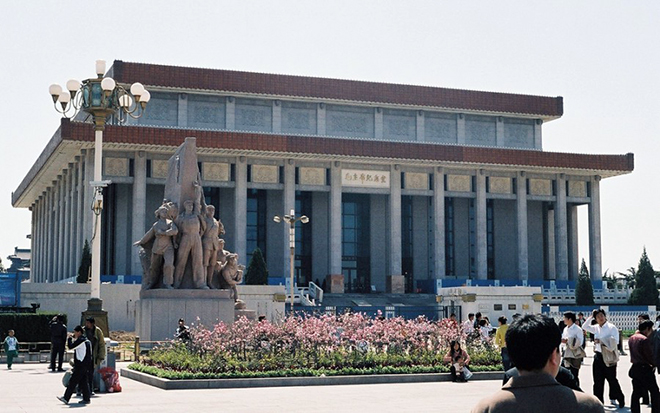
Among the leader’s living descendants, one child from each Zedong’s wife is alive: Mao Anqing, Li Min, and Li Na. Zedong had a firm hand over his children and did not allow them to use the famous second name. Zedong’s grandchildren are not high-ranking bureaucrats; however, one of them, Mao Xinyu, became the youngest general of the Chinese army.
The granddaughter Kong Dongmei is included in the list of the richest Chinese women. Nevertheless, it happened due to her wealthy husband; the woman married in 2011.
Interesting facts
The name Zedong consisted of two hieroglyphs and could be translated as “the mercy to the East.” The parents wished the best for their son and hoped he would be necessary for the country, so they gave this name to the boy. Eventually, these hopes were justified.
Mao Zedong’s epoch is ambiguous. On the one hand, the percentage of literate Chinese people grew in comparison with the beginning of the century from 20% to 93%. However, mass repressions, cultural and material assets liquidation, and the ill-conceived agricultural revolution in the 1950s give reasons to question Mao’s achievements.
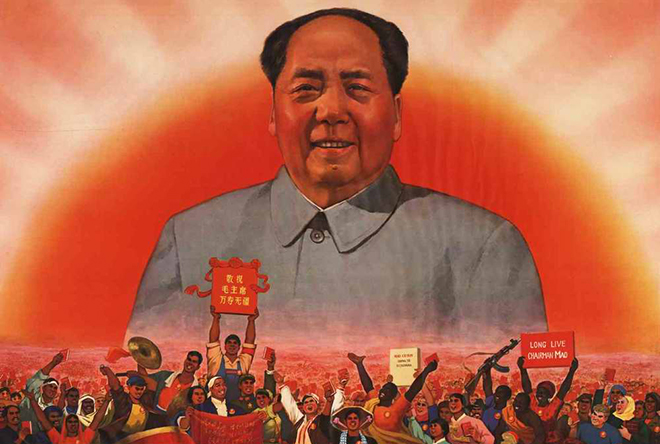
Thanks to the cultural revolution, Mao Zedong’s personality cult strengthened. Every PRC citizen had a small red book of the leader’s quotes and aphorisms. It was obligatory to have Mao Zedong’s portrait in all rooms. Historians often compare the Chinese dictator’s cult with Stalin's cult of personality.
The struggle against sparrows in the late 1950s is the sad example of people’s alleged victory over nature. Special devices prevented these small birds from grounding so that they had to fly for more than 20 minutes; exhausted, they fell down. In a year after all sparrows were exterminated, a large number of people died: the harvest was destroyed by insects consumed by birds. Consequently, the Chinese had to bring new birds from other countries to restore the natural balance.
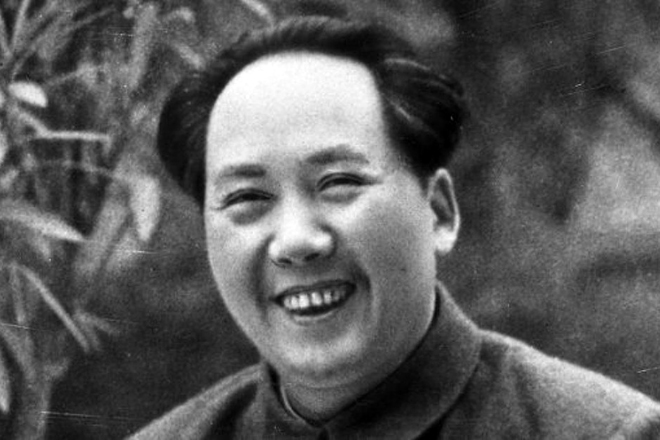
Mao Zedong never brushed his teeth. To maintain the cleanliness of his oral cavity, he gargled with green tea and ate all tea leaves after that. As a result, the dictator’s teeth were covered with the green plaque, but it did not prevent him from smiling in some pictures.





